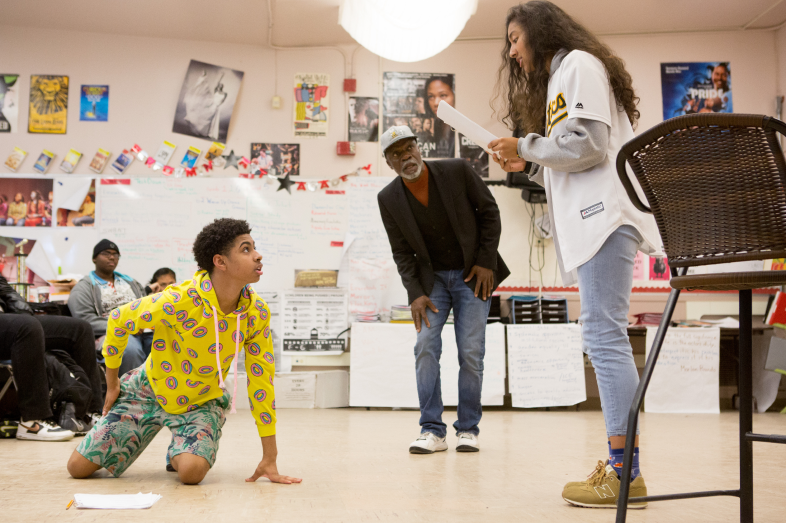In the United States, nearly 80% of public school teachers are white, but more than half of their students aren’t.
While teaching in and around Chicago for 14 years, Sofia Gonzalez dedicates herself to the success of her students. Eventually, one of them joined Gonzalez as a colleague when she also became a teacher.
The former student explained to Gonzalez that she was the first Latina teacher she had, and she said to herself, “I want to be like her. I want to do that.”
“And that’s just one picture of the power of representation,” said Gonzalez, a high school English teacher at J. Sterling Morton East High School in Illinois. “We could all agree that anyone can teach any student wherever you come from, but there’s something to be said about someone in front of you that looks like you, that identifies with your cultural landscape, that gets you, that feels you and that is ready to support you.”
Lack of diversity among teachers and school leaders is not a new issue. In fact, it’s been a conversation since the late 1800s when Caroline LeCount, an African American educator and civil rights activist, first sounded the alarm that the country needed more Black educators for Black students, said Sharif El-Mekki, founder and CEO of the Center for Black Educator Development.
“Everyone is doing this hand wringing and sad singing about dropout rates and low test scores and illiteracy, when we’ve known for over a century that Black teachers have a profound impact on student achievement of Black students, and it mirrors with Indigenous teachers and Indigenous students, Latino teachers and Latinx students,” El-Mekki said.
Gonzalez and El-Mekki shared their perspectives during a session at the Education Writers Association’s 2023 National Seminar. Moderated by NPR’s Nicole Cohen, the panel also included Conra Gist, associate professor at University of Houston, and Nithya Joseph, partner at TNTP.

Why Does Diversity Among Teachers Matter?
El-Mekki says those in education and teacher preparation need to “triple down” on improving the diversity of the teacher workforce because of its direct impacts on student achievement and success. A study by the Yale Child Study Center found that Black students experience racism from their teachers as early as age 3.
Gist, co-editor of a research handbook on teachers of color, noted that research also supports El-Mekki’s assertions.
“Having a teacher of color in the classroom influences the social-emotional experiences of students,” Gist said. “They feel more valued; they have access to culturally responsive pedagogy that actually lifts them up; they’re more likely to actually remain in the classroom and not enter into that school-to-prison pipeline.”
Gonzalez has seen this at work in her classroom. At her school, Gonzalez teaches many multilingual students and has intentionally gone out of her way to disrupt the Eurocentric curriculum to create a safe learning environment in her classroom for all students.
She puts up the flags from her students’ home countries in her classroom, plays cultural music, meets regularly with their families and consistently reminds them what they’re capable of. As a result, a majority of her multilingual learners have passed her class, and absenteeism among her students fell, Gonzalez said.
“The academic achievement has been wild, and I don’t owe it to myself,” Gonzales said. “I owe it to the environment that we as educators set when we’re intentional about amplifying the voices of our diverse student body.”
However, the benefits of a diverse teaching workforce go beyond its impacts on students of color and also benefits white students, Nithya Joseph said.
What Is the Root of the Issue?
At its core, El-Mekki believes the issue stems from the fact that most teacher training is rooted in white behavior theorists and educational theorists that does not include experiences or histories of educators of color.
But beyond that, he’s seen issues with recruitment and retention of educators of color. Many school district leaders El-Mekki said he has spoken with do not have a plan to retain teachers.
“I don’t have a Black teacher in my back pocket to give to you, and first of all, even if I did, how do we know that you’re not inviting them into a hostile racial environment in your school and district?” El-Mekki said.
Philadelphia lost 1,100 Black teachers in the last two decades, according to El-Mekki. During that time, the total number of teachers stayed consistent while there were gains among white, Asian and Latino teachers.
“That means that we need to dive deeper to see what’s the experience of a Black teacher in our schools,” El-Mekki said.
What Solutions Should Journalists Explore?
- Don’t be shortsighted. The issue will not be solved by getting more teachers into the classroom. How are teachers and school leaders of color being recruited and retained?
- Data can be limited. Joseph noted that it can be easy to find data related to the racial demographics of teachers, but it can be difficult to find similar information about school and district leaders. Data related to the diversity of school leadership could be useful as principals and superintendents affect the environment for teachers of color, Joseph said.
- Recognize the overlap. Can the teacher shortages in certain regions or subject areas be solved by improving diversity among the workforce?
“We can’t separate the shortage conversation from thinking about the teacher diversity conversation,” said Joseph. “They should be absolutely combined.”
- Help inform the public. Amplify teacher and student voices about their experiences and perspectives.





